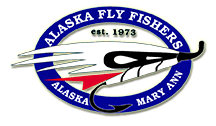

Homing
By Bill Hauser
I have a question. How do salmon find their way back from the ocean to their home stream? And quite possibly to the very spawning grounds where they had been spawned.
You all should know the answer. The young salmon at the smolt stage memorize the unique odor of the freshwater stream where they had originated and where many have spent the early part of their life. When adults return to the stream they follow that odor memory back but in reverse order. Right?
Okay. So now I have another question. What about the Nick Dudiak Fishing Lagoon out on the end of the Homer Spit? How do the salmon home to that site? There is no stream and no freshwater.
I was involved with that project in the early 1980s. Nick Dudiak got it started and I helped.
All right. What is the point of all this? You see, that too is where we started. We agreed this would be a good project location except – no freshwater for imprinting. As it happens, scientists, in the process of their experiments to learn how salmon imprinted and homed, discovered something interesting. They learned that molecules of organic matter dissolved in the freshwater were key ingredients in the process of imprinting. The organic matter – and probably some inorganic chemicals, too - is what creates the unique signature of each stream. Then, the scientists further tested salmon with an artificial organic chemical called “morpholine.”
“Aha,” we said, and we ordered some morpholine. We dispensed the morpholine into the hatchery raceway while the smolts were being prepared for release. We planned to dose the lagoon with the chemical in the following years as an attractant so the returning adults could home.
A year or so after the first smolt release, Nick and I were at the lagoon waiting for the hatchery truck which was hauling the load of smolts, the morpholine, and the morpholine delivery apparatus. Abruptly, we realized something strange was going on. Fish were in the lagoon and jumping. Silvery fish. Huh. Never saw that before. Wait, these are salmon! How can that be? The only salmon here are from the smolts we had previously released. But there is no morpholine to attract them.
After a year or so with similar experience, we took a risk and discontinued the use of morpholine. But you have seen it, yourself. The adult salmon return to the fishing lagoon just fine without the attractant and without freshwater.
So this raises another question... how is this possible; how are they able to do they do this? This question has nagged at me most of the last 30 years.
Finally, within the past several years, we think a more complete story has emerged. As it happens, during the past 3 decades, I also acquired a bright son-in-law, Peter, who has become a very capable fishery scientist (and fisherman). He and I have discussed this topic often and he has become active with research projects in Alaska and studying other research reports. He has steered us into a very plausible explanation of the long dilemma. So here goes:
It has become clear (with this and other studies) that freshwater is not required for imprinting and homing of salmon; i.e., it can happen in saltwater.
Probably, organic molecules alone are not required and inorganic molecules may also be important.
Research on sockeye salmon in British Columbia suggests that salmon smolts and returning adults can use the earth’s geomagnetic field for imprinting and homing. (Send an email if you want more details or explanation.)
Most likely, salmon, migrating around the North Pacific for one or several years, use the geomagnetic field for orientation and navigation back to nearshore areas. (Sea turtles use this. Migrating birds do this.) Salmon also have the ability to use a sun-compass system for navigation.
When nearshore, some amount of geomagnetic homing probably kicks in.
Finally, fine scale terminal homing probably relies on olfactory (or odor).
So this all suggests the process of imprinting and homing just that. A continuous process that relies different but overlapping stimuli to accomplish the sequence of overlapping parts of their life histories.
P.S. There is also evidence that imprinting may begin at the alevin stage while they are still in the gravel after hatching in mid winter.
Alaska Fly Fishers, 200 W 34th Ave, Suite 1233, Anchorage, AK 99503